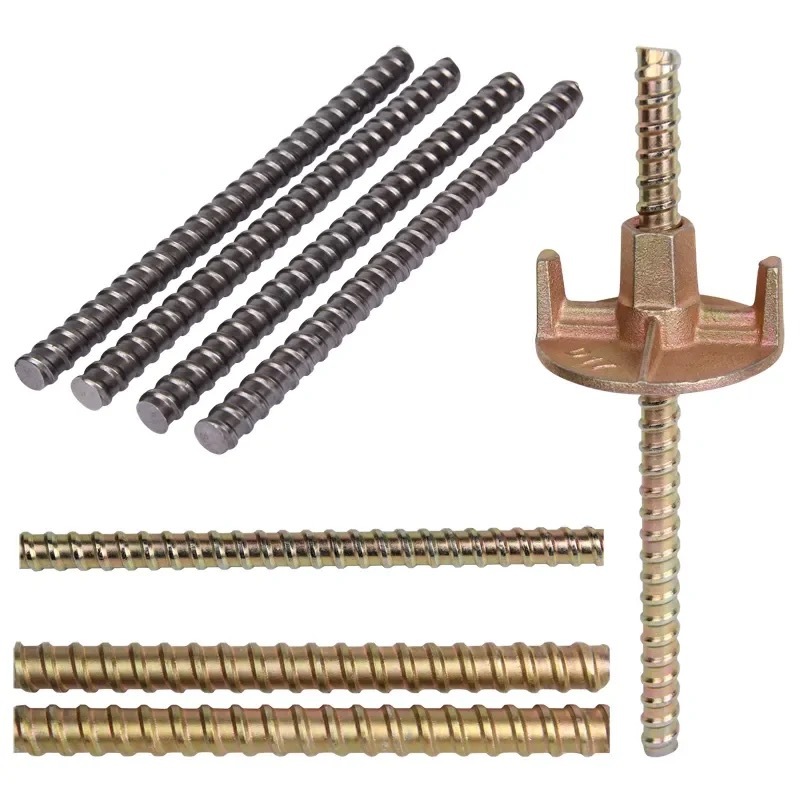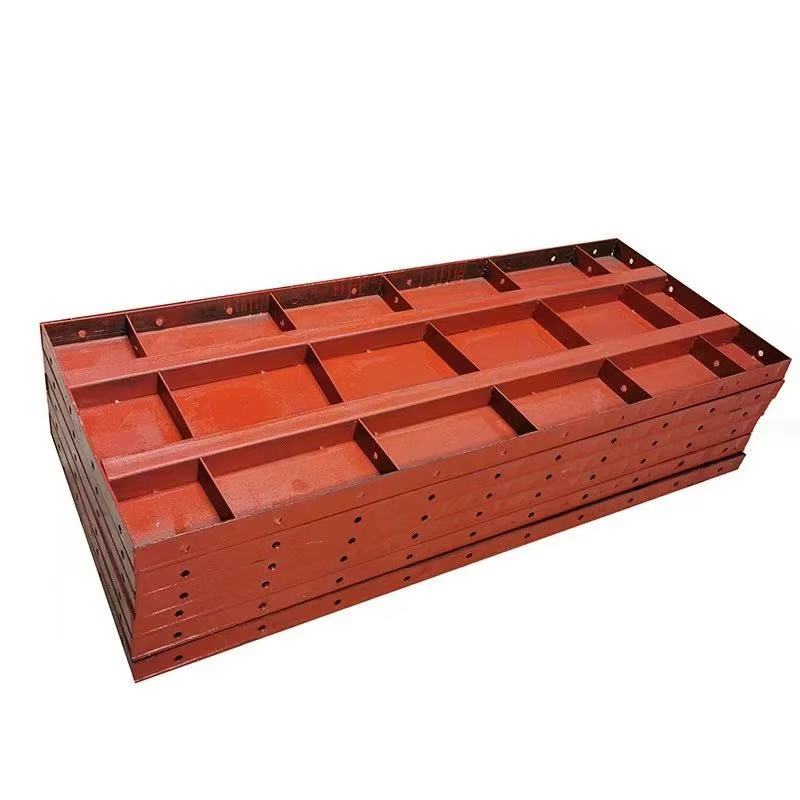How to Properly Install Galvanized Forged Fastener Couplers for Maximum Efficiency
How to Properly Install Galvanized Forged Fastener Couplers for Maximum Efficiency Table of Contents Introduction to Galvanized Forged Fastener Couplers The Importance of Proper Installation Preparation: Tools and Materials Needed Step-by-Step Installation Process Step 1: Assessing the Work Area Step 2: Selecting the Correct Couplers St

How to Properly Install Galvanized Forged Fastener Couplers for Maximum Efficiency
Table of Contents
- Introduction to Galvanized Forged Fastener Couplers
- The Importance of Proper Installation
- Preparation: Tools and Materials Needed
- Step-by-Step Installation Process
- Step 1: Assessing the Work Area
- Step 2: Selecting the Correct Couplers
- Step 3: Preparing the Fasteners
- Step 4: Installing the Couplers
- Step 5: Testing the Assembly
- Best Practices for Installation
- Common Errors to Avoid
- Maintenance Tips for Longevity
- Conclusion
- Frequently Asked Questions (FAQs)
Introduction to Galvanized Forged Fastener Couplers
Galvanized forged fastener couplers play a crucial role in ensuring the stability and strength of various structures. These components are designed to connect sections of metal, providing the necessary support and durability for industrial applications. Understanding their installation process is vital for maximizing their efficiency and lifespan. This guide aims to walk you through each step of the installation process, ensuring that you achieve optimal results.
The Importance of Proper Installation
Proper installation of galvanized forged fastener couplers is essential for several reasons:
1. **Strength and Stability**: A well-installed coupler ensures that the connection between components is strong, reducing the risk of failure under stress.
2. **Safety**: Inadequate installation can lead to accidents, posing risks to personnel and equipment.
3. **Cost Efficiency**: Properly installed couplers minimize the likelihood of repairs and replacements, saving time and resources in the long run.
By adhering to the best practices outlined in this guide, you can ensure that your couplers perform at their best, providing the reliability that your projects demand.
Preparation: Tools and Materials Needed
Before diving into the installation process, it is crucial to gather all necessary tools and materials. Here’s what you’ll need:
- **Tools**:
- Wrenches (various sizes)
- Torque wrench
- Socket set
- Level
- Measuring tape
- Safety gear (gloves, goggles, hard hat)
- **Materials**:
- Galvanized forged fastener couplers
- Compatible fasteners (bolts, screws)
- Lock washers
- Anti-corrosion lubricant (if necessary)
Having these items on hand will streamline the installation process, allowing for a more efficient workflow.
Step-by-Step Installation Process
Step 1: Assessing the Work Area
Before beginning installation, it is essential to evaluate the work area. Ensure that:
- The space is clear of debris and hazards.
- You have adequate lighting to see what you are doing.
- The surfaces where the couplers will be installed are clean and free from rust or dirt.
A well-prepared workspace sets the stage for a successful installation.
Step 2: Selecting the Correct Couplers
Choosing the right couplers is crucial for achieving maximum efficiency. Consider the following factors:
- **Load requirements**: Ensure that the couplers can handle the expected loads.
- **Material compatibility**: The couplers should be compatible with the materials they will connect.
- **Corrosion resistance**: Galvanized options are preferable for outdoor or humid environments.
Consult manufacturer specifications if needed to ensure that you select the appropriate coupler for your application.
Step 3: Preparing the Fasteners
Before installation, prepare your fasteners. Check for any defects and ensure they meet the required specifications. If necessary, apply an anti-corrosion lubricant to the threads of the fasteners to prevent corrosion and facilitate easier installation.
Step 4: Installing the Couplers
Follow these steps for the installation of the couplers:
1. **Align the Components**: Position the sections of metal that will be connected, ensuring they are aligned correctly.
2. **Insert the Coupler**: Place the galvanized forged fastener coupler over the joint, ensuring it fits snugly.
3. **Attach Fasteners**: Insert the prepared fasteners through the coupler and into the corresponding components, ensuring they are correctly seated.
4. **Tighten the Fasteners**: Using a wrench, tighten the fasteners to the manufacturer’s specifications. Employ a torque wrench for precision, ensuring that you meet the required torque levels.
Step 5: Testing the Assembly
After installation, it is crucial to test the assembly. This can be done by applying pressure to the joined components to ensure that they hold firm under load. Monitor for any signs of movement or instability. If any issues arise, reassess the installation and make necessary adjustments.
Best Practices for Installation
To guarantee the best results, adhere to these best practices during installation:
- **Follow Manufacturer Guidelines**: Always refer to the installation manual provided by the coupler manufacturer for specific instructions and torque specifications.
- **Use Quality Materials**: Invest in high-quality galvanized forged fasteners to ensure durability and reliability.
- **Regular Inspections**: Conduct periodic inspections of the installed couplers to detect any wear or loosening over time.
- **Educate the Team**: Ensure that everyone involved in the installation process is trained and understands the proper techniques.
Common Errors to Avoid
Even with the best intentions, mistakes can happen. Be mindful of these common errors during installation:
- **Over-tightening Fasteners**: This can lead to stripping or damaging the threads, compromising the joint’s integrity.
- **Neglecting Safety Gear**: Always wear appropriate safety equipment to protect yourself during installation.
- **Ignoring Environmental Factors**: Be aware of weather conditions and how they might affect the installation, especially in outdoor settings.
Avoiding these pitfalls can enhance the effectiveness of your installation efforts.
Maintenance Tips for Longevity
To ensure the longevity and performance of your galvanized forged fastener couplers, consider these maintenance tips:
- **Regular Cleaning**: Periodically clean the couplers to remove dirt and debris, which can lead to corrosion.
- **Inspect for Wear**: Check for signs of wear or loosening and address issues promptly to prevent failure.
- **Reapply Lubricant**: If applicable, reapply anti-corrosion lubricant to the fasteners to maintain their protective barrier.
By implementing a solid maintenance routine, you can extend the lifespan of your couplers significantly.
Conclusion
Installing galvanized forged fastener couplers is a critical task that requires attention to detail and adherence to best practices. By following the outlined steps—from preparation to testing—you can ensure that your installations are efficient, safe, and reliable. Remember to conduct regular maintenance and inspections to maximize the performance and longevity of your couplers. A well-installed fastener system not only enhances structural integrity but also provides peace of mind in any industrial application.
Frequently Asked Questions (FAQs)
1. What materials are galvanized forged fastener couplers made from?
Galvanized forged fastener couplers are typically made from high-strength steel that has undergone a galvanization process to enhance corrosion resistance.
2. How do I know if I have installed the couplers correctly?
Properly installed couplers should feel secure and stable. If you detect any movement or instability during testing, you should reassess the installation.
3. Can I use galvanized couplers in outdoor environments?
Yes, galvanized fastener couplers are designed to withstand outdoor conditions due to their protective coating that resists corrosion.
4. How often should I inspect my fastener couplers?
It is advisable to inspect fastener couplers at least once a year or more frequently if they are subjected to heavy loads or harsh environments.
5. What should I do if I find a damaged coupler?
If you discover a damaged coupler, it should be replaced immediately to maintain the integrity of the structure and prevent potential failures.
Key words:
PREVIOUS:
PRODUCT SEARCH
Search And Quickly Find The Products You Need
With advantages in technology, quality, and service, the company is steadily advancing in the industry, continuously providing high-quality hydraulic rubber products and services to global customers, demonstrating strong development potential and broad market prospects.










